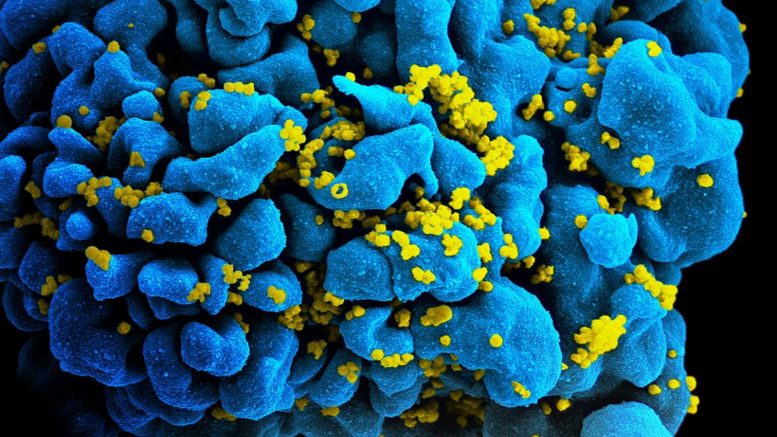When the human immunodeficiency virus infects cells, it can either exploit the cells to start making more copies of itself or remain dormant--a phenomenon called latency. Keeping these reservoirs latent is a challenge. A new paper, published in the Proceedings of the National Academy of Sciences, has found a way to look for chemicals that can keep the virus suppressed into its dormant state.
"The current drug treatments block healthy cells from becoming infected by the virus," said Yiyang Lu, a PhD student in the Dar lab at the University of Illinois Urbana-Champaign. "The latent reservoir poses a bigger problem because it can start producing the virus at any time. Consequently, patients have to remain on antiretroviral therapy all their lives to prevent a viral rebound."
So far, there are two types of drug treatment strategies: shock-and-kill, where reactivated cells are killed due to HIV, and a second drug cocktail prevents other cells from being infected, or block-and-lock, which forces the virus into a deep latent state so that it does not reactivate again. The problem with the first approach is that there are always some leftover reservoirs that do not get activated. The problem with the second approach, which the researchers are trying to solve, is that there aren't many drugs that have been discovered.
Since the transition from latency occurs randomly, measuring the fluctuations in gene expression can provide more coverage than the average gene expression. "Commercial drug screens usually look at mean gene expression. Instead, we used a drug screen that looks at fluctuations in gene expression. Our screen allowed us to therefore find more compounds that could have been overlooked," Lu said.
"We implemented a time-series drug screening approach that are less commonly used in other labs," said Roy Dar, an assistant professor of bioengineering at Illinois and faculty member of the Carl R. Woese Institute for Genomic Biology. The researchers used a T- cell population, which is a reservoir for HIV, that had been infected by the virus. They imaged the cells in 15-minute intervals for 48 hours and tested over 1800 compounds. They looked at noise maps to identify which drugs can modulate the gene expression.
Using the screen, they were able to find five new latency-promoting chemicals, raising the possibility that similar screens can be successfully adapted to study other systems that exhibit variability in gene expression, such as cancer. They are currently working on understanding how the five novel drugs suppress viral reactivation. "We want to test if these drugs have off-target effects in terms of how many other genes they affect in the host cells," Dar said. "We also want to test these drugs in patient samples to see whether these drugs suppress HIV in them."
The study "Screening for gene expression fluctuations reveals latency-promoting agents of HIV" can be found at https://doi.org/10.1073/pnas.2012191118. The study was funded by the National Institutes of Health, the National Institute of Allergy and Infectious Diseases, and the National Science Foundation.
Source: Carl R. Woese Institute for Genomic Biology

Be the first to comment on "Researchers Hunt for Drugs That Keep HIV Latent"